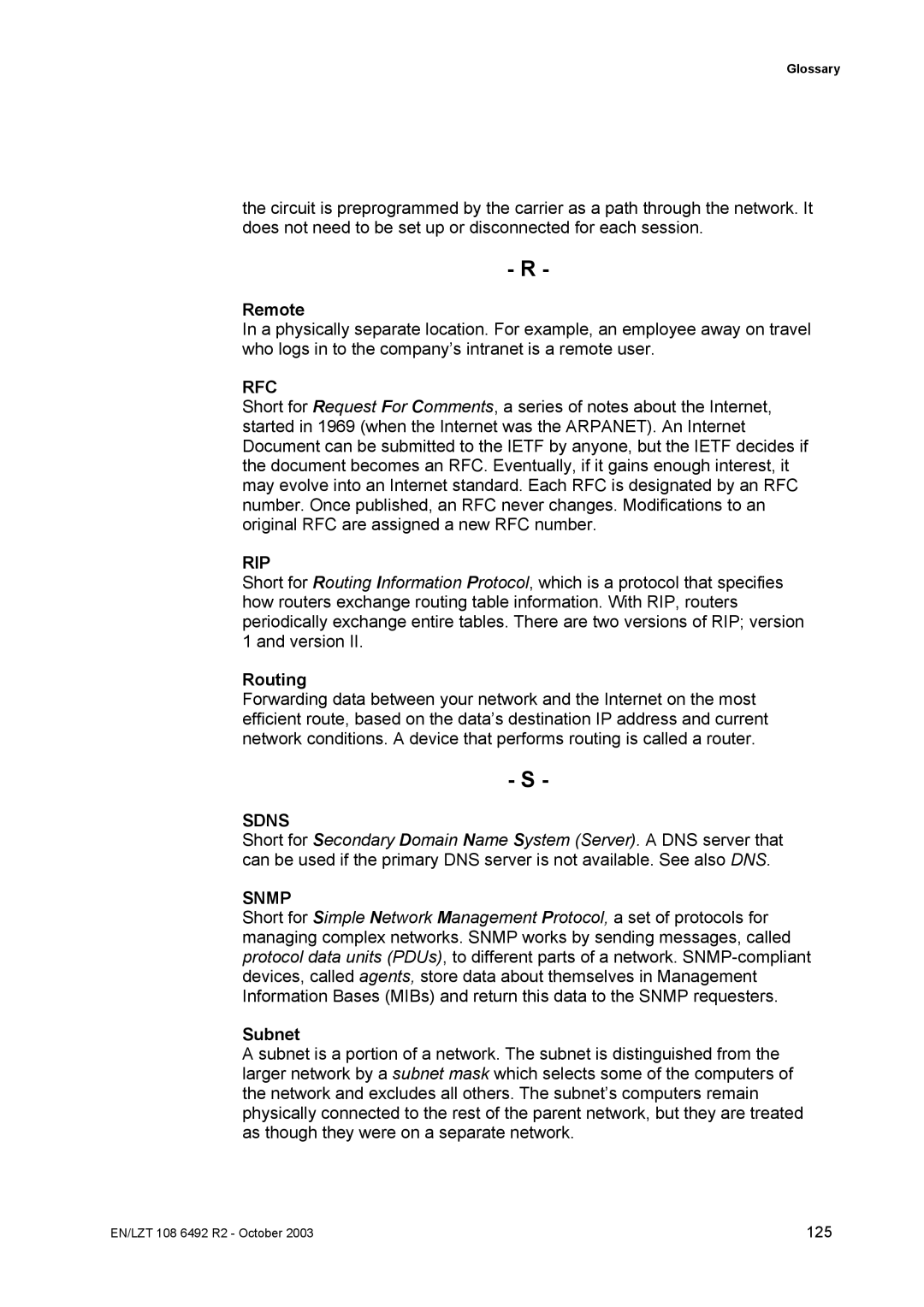Glossary
the circuit is preprogrammed by the carrier as a path through the network. It does not need to be set up or disconnected for each session.
- R -
Remote
In a physically separate location. For example, an employee away on travel who logs in to the company’s intranet is a remote user.
RFC
Short for Request For Comments, a series of notes about the Internet, started in 1969 (when the Internet was the ARPANET). An Internet Document can be submitted to the IETF by anyone, but the IETF decides if the document becomes an RFC. Eventually, if it gains enough interest, it may evolve into an Internet standard. Each RFC is designated by an RFC number. Once published, an RFC never changes. Modifications to an original RFC are assigned a new RFC number.
RIP
Short for Routing Information Protocol, which is a protocol that specifies how routers exchange routing table information. With RIP, routers periodically exchange entire tables. There are two versions of RIP; version 1 and version II.
Routing
Forwarding data between your network and the Internet on the most efficient route, based on the data’s destination IP address and current network conditions. A device that performs routing is called a router.
- S -
SDNS
Short for Secondary Domain Name System (Server). A DNS server that can be used if the primary DNS server is not available. See also DNS.
SNMP
Short for Simple Network Management Protocol, a set of protocols for managing complex networks. SNMP works by sending messages, called protocol data units (PDUs), to different parts of a network.
Subnet
A subnet is a portion of a network. The subnet is distinguished from the larger network by a subnet mask which selects some of the computers of the network and excludes all others. The subnet’s computers remain physically connected to the rest of the parent network, but they are treated as though they were on a separate network.
EN/LZT 108 6492 R2 - October 2003 | 125 |
